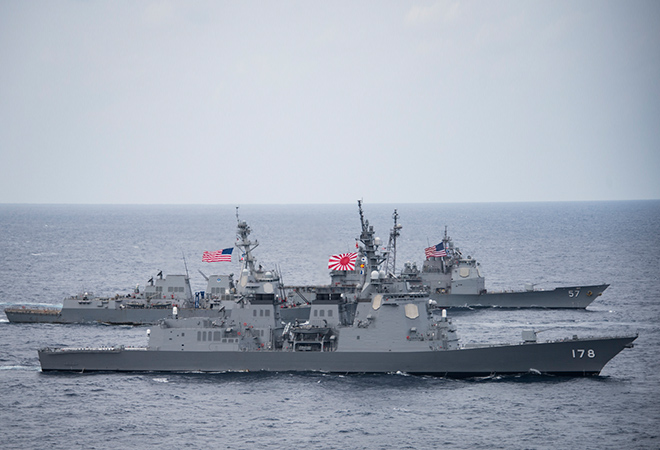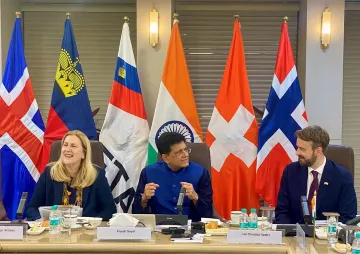
The East Asia Summit (EAS) conducted in 2018 saw positive movement with respect to the Association of Southeast Asian Nations’ (ASEAN) deliberations over the concept of ‘Indo-Pacific’ as Indonesia, which is leading the effort in this regard, circulated the “Indo-Pacific Outlook” concept paper amongst ASEAN members for further inputs at the beginning of the year. Indonesia’s Indo-Pacific vista underlines the peace and security of the Indian Ocean and the Pacific Ocean which is of paramount importance for sustaining economic vibrancy of such a vast expanse. Moreover, the archipelagic country emphasises on the principles of transparency, inclusiveness and respect for international law while seeking to promote cooperation in maritime affairs and infrastructure. In an attempt to institutionalise the region, Jakarta perceives EAS as an axis institution for dealing with regional matters instead of creating a new institution.
ASEAN’s yearning to shape the concept of the Indo-Pacific can be construed as an attempt to mould the Indo-Pacific in the ASEAN way. It comes at a time when a flurry of ideas by different nations, most importantly by Japan and United State’s (US) Free and Open Indo-Pacific (FOIP).
Further, there is a feeling in some quarters that the Indo-Pacific is a closed and exclusive region, dominated by major-power politics, thus unseating ASEAN from the driver’s seat when it comes to dealing with regional matters. Such a notion got accentuated when the US vice-president Mike Pence openly castigated China by stating that “empire and aggression have no place in the Indo-Pacific.” Furthermore, for the first time in history, the APEC which has seven out of ten ASEAN countries as its members, could not come up with a joint communique amid a tussle between the US and China over security and trade issues. Thus, being at the heart of the region, ASEAN’s endeavour to expound the Indo-Pacific is in line with its quest to be firmly in the driver’s seat while navigating through oceanic waters.
The term Indo-Pacific which was first used by Indian historian Kalidas Nag in 1941 and then reused by an Indian Navalist gained strategic currency after Japanese Prime Minister Shinzo Abe’s now famous speech in the Indian Parliament titled “Confluence of the Two Seas” in 2007. It entered the academic discourse in the ensuing years and was formalised by the Australian government when they used it in the Defence White Paper, 2013. Former Indonesian Foreign Minister Marty Natalegawa, in the same year, sought a region-wide treaty to safeguard an Indo-Pacific while the current Indonesian dispensation embarked upon the discussion through the aegis of ASEAN earlier in 2018. The term Indo-Pacific found its place in India’s official communiques after PM Modi assumed power in 2014. Although the Obama administration had begun using the term, President Trump categorically replaced the Asia-Pacific with the Indo-Pacific in the US official statements.
In the past couple of years, both the US and Japan have prefixed the Indo-Pacific with the adjectives ‘Free’ and ‘Open’, thus giving normative connotation to the evolving geographic compass between the Indian Ocean and the Pacific Ocean.
The two adjectives are not just common adjectives but loaded with the insinuation that China is impeding the freedom of navigation and overflight in the region which is unacceptable to them. These principles along with ‘rules-based order’, ‘inclusiveness’, ‘transparency’, ‘respect for international law’, ‘freedom of navigation and overflight’ and ‘territorial integrity’ among others are encored in most of the official bilateral as well as multilateral joint statements in order to emboss them on the national imagination of the individual countries as well as to send the right message to the rule-dodgers. The expressions ‘Free’ and ‘Open’ can thus be considered as representative of all the principles mentioned above which played a crucial role in the economic success of the Indo-Pacific countries.
It is around these principles that a sustainable and inclusive Indo-Pacific regionalism model can be built, although at the cognitive level, it is challenging to build regionalism in the Indo-Pacific since the region is too vast and diverse with strong sub-regional identities. Further, these principles have resonance in the functional areas of economics and security, which are the two principal pillars of Indo-Pacific regionalism. Additionally, the Comprehensive and Progressive Agreement for Trans-Pacific Partnership (CPTPP) and the Regional Comprehensive Economic Partnership (RCEP) are proving to be a harbinger of economic regionalism in the area, even though the exit of the US was a major setback for the existing regional order. In the security arena, the quadrilateral and trilateral initiatives between the regional players are likely to complement the larger idea of the Indo-Pacific in terms of norms and values. Thus, the Indo-Pacific is about to emerge as a wide norm setter under which functional sub-regional initiatives are likely to thrive.
Where does India Stand?
PM Modi put forth India’s vision of the Indo-Pacific at the Shangri La dialogue, 2018. The view was consistent with the overall norms enunciated by regional powers, including the US, Japan, Australia and Indonesia with the ASEAN at the heart of it. He made it clear that India does not take sides, but chooses the side of values and principles which are eloquently enunciated by ASEAN. Thus, India’s approach towards larger Indo-Pacific is spindled around ASEAN and what the ASEAN stands for.
By emphasising ASEAN-centrality, India is trying to accord credence to ASEAN’s conception of free and open Indo-Pacific with utmost respect to the rule of the law. India not only professes these principles through words but also practice them in her relations with other nations which was demonstrated when she peacefully settled her maritime boundary dispute with Bangladesh in 2014. Such actions make India stand apart from the other nations whose words and deeds run in the diametrically opposite direction. Further, pronouncement of ASEAN-centrality reinforces India’s cultivated image as a regional partner rather than regional hegemon trying to win over individual ASEAN countries by the might of money and muscle power.
India discerns the fact that to maintain geopolitical balance in the region and to prevent the balance from tilting towards China, ASEAN unity is of utmost importance. India’s push for ASEAN-centrality is a subtle way to shape a more cohesive ASEAN which appears fragmented at this point of time.
India would like to see a unified ASEAN defending its core principles amid attempts to drive a wedge between individual members. Lastly, India shares a disputed border with China which put severe constraints on its ability to manoeuvre in South China Sea to defend rights of the individual ASEAN members. However, she reckons that a united ASEAN with indirect support from friendly countries is a formidable force to stand up to any future contingency.
Thus, India does not have to mend her ways to deal with the region as her terms of engagement are perfectly in consonance with the broad principles of the emerging Indo-Pacific. The construct has already helped India in more than one way. First, India got her due recognition as a responsible regional player capable of acting as a net security provider. Second, the close relationship with the US and its treaty allies gave India access to advanced technology, critical resources, and military hardware which was absent during earlier times. Third, as an integral part of the regional architecture, India got an opportunity to not only follow the norms but also to set them. And finally, the construct offered India an additional lever to deal with China. Therefore, any further development of the construct is likely to benefit India.
The views expressed above belong to the author(s). ORF research and analyses now available on Telegram! Click here to access our curated content — blogs, longforms and interviews.




 PREV
PREV


